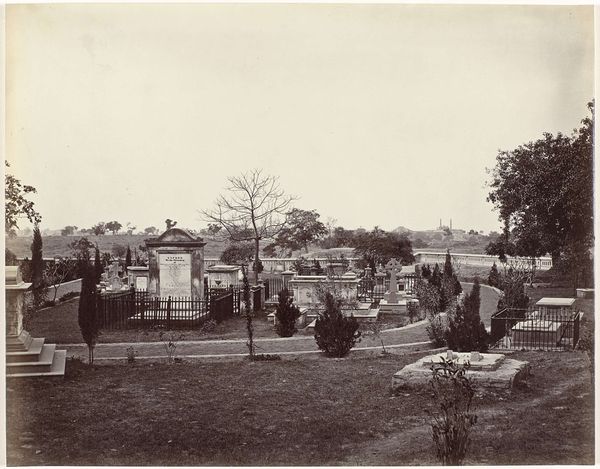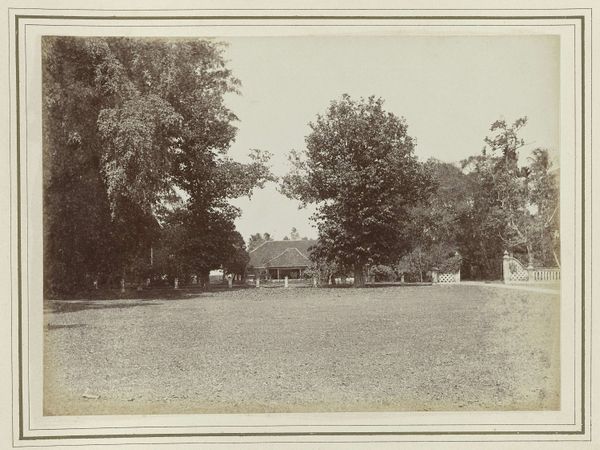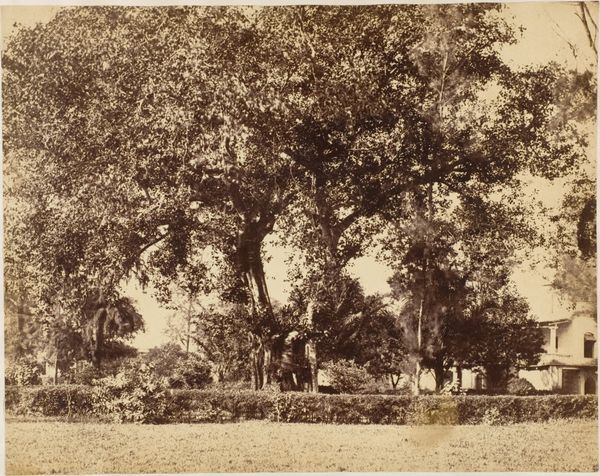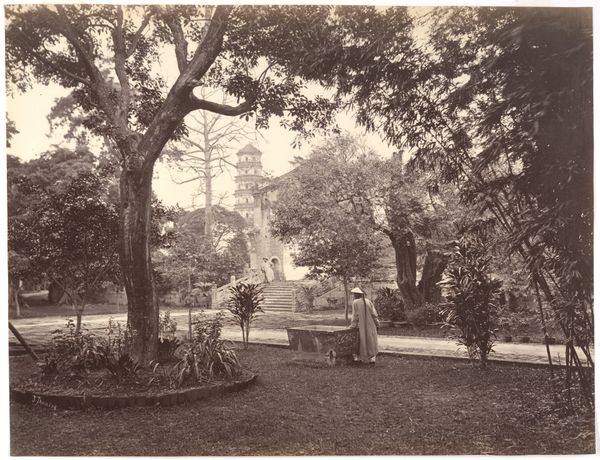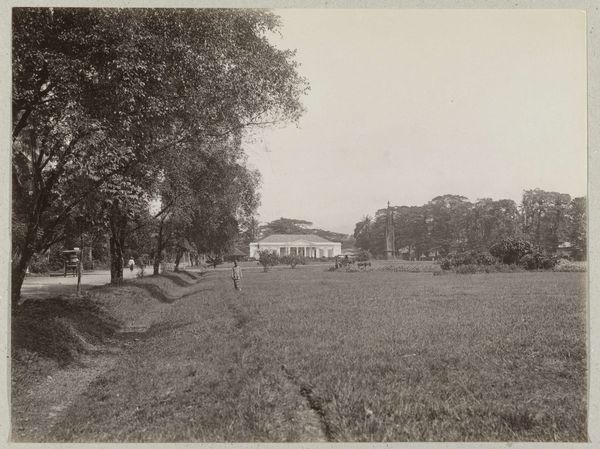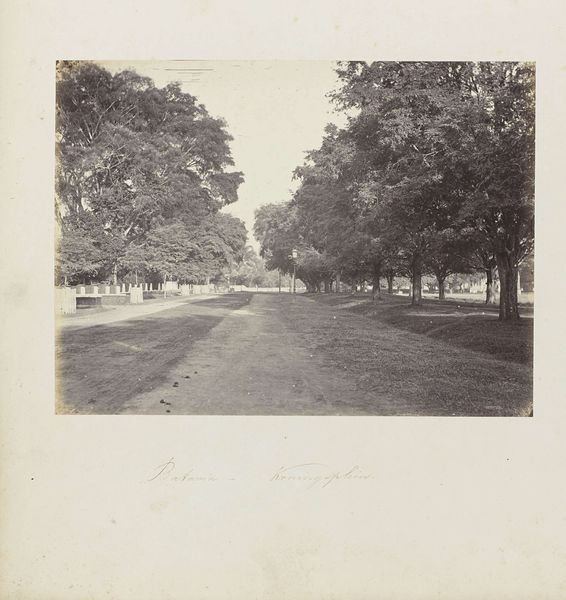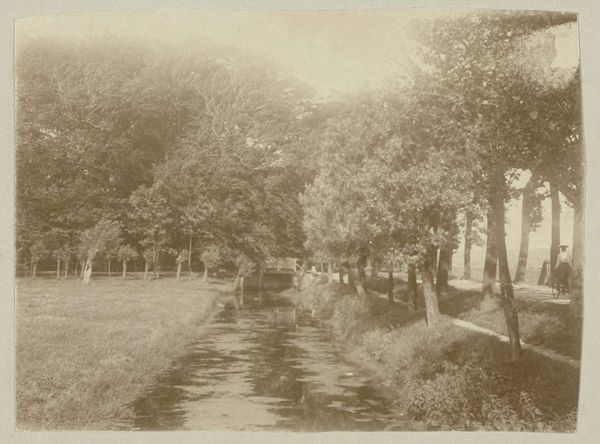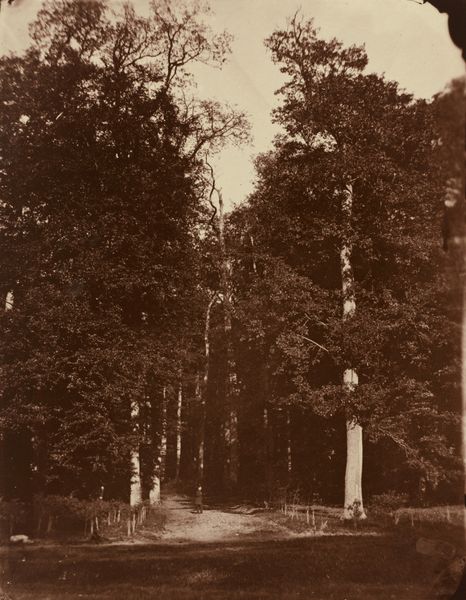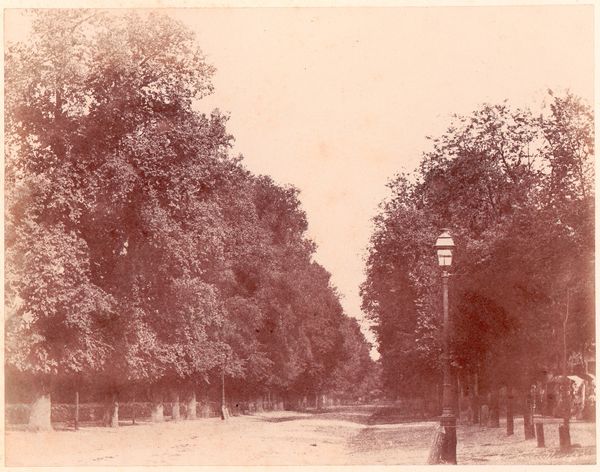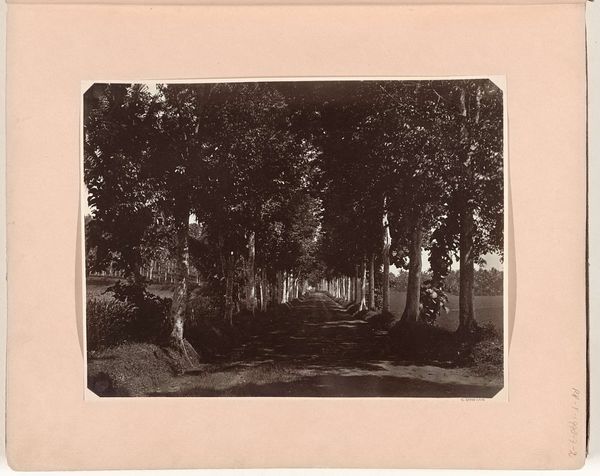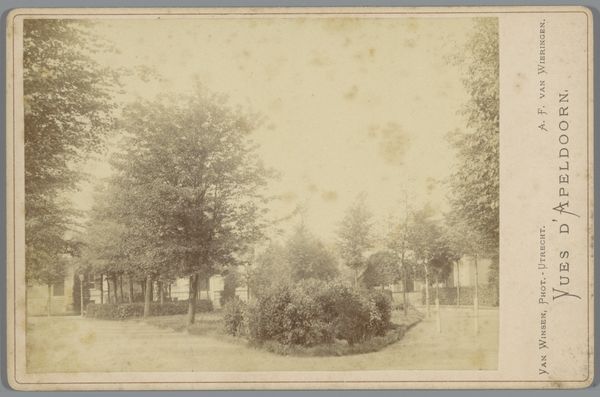
Park van Saint-Cloud, in de verte du ruïnes van het Kasteel van Saint-Cloud 1887 - 1900
0:00
0:00
Dimensions: height 208 mm, width 275 mm
Copyright: Rijks Museum: Open Domain
Editor: This gelatin silver print, titled "Park van Saint-Cloud, in de verte du ruïnes van het Kasteel van Saint-Cloud" by X phot., captured sometime between 1887 and 1900, evokes a strong sense of melancholic grandeur. It's hard not to focus on the lost monumentality implied by the ruins in the distance. What statements might this photographer have been trying to make? Curator: I'm drawn to that implied critique, too. Consider the late 19th century in France. The echoes of revolution and empire still reverberated, class tensions were high, and industrialization transformed the landscape. How might a park, particularly one featuring decaying aristocratic symbols like a ruined castle, become a site for understanding and potentially challenging societal power structures? Editor: I guess seeing it now, in a post-revolutionary world, gives the park a somewhat haunted feeling. I'm used to viewing nature photography as sublime or celebrating untouched spaces, but here, the manicured park suggests control and imposed order, quite unlike 'untouched' wilderness. Curator: Precisely. The park isn’t ‘natural,’ it’s a curated experience. Consider the labor, resources, and political will required to maintain such a space. Who benefited from it? Who was excluded? Photography at this time provided unique access for more people, however. This photography would bring the Park, previously available for an exclusive wealthy class, to new middle classes Editor: So you see the choice of subject, and the ruins, as almost a critique of class structure, or a statement about who gets to access beauty and leisure? Curator: In part, yes, and also, what values the viewer brings with them in response. It is open to our own values and responses as well. Do we see hope in the reconstruction, or an ongoing warning in the state of ruins? This opens more doors to wider audience engagement. Editor: I never would have thought of a landscape photo containing so much class critique and open possibilities for new engagement! Curator: Art, even seemingly straightforward landscape photography, always participates in a larger conversation. Our job is to listen critically and consider from where we stand, today.
Comments
No comments
Be the first to comment and join the conversation on the ultimate creative platform.
